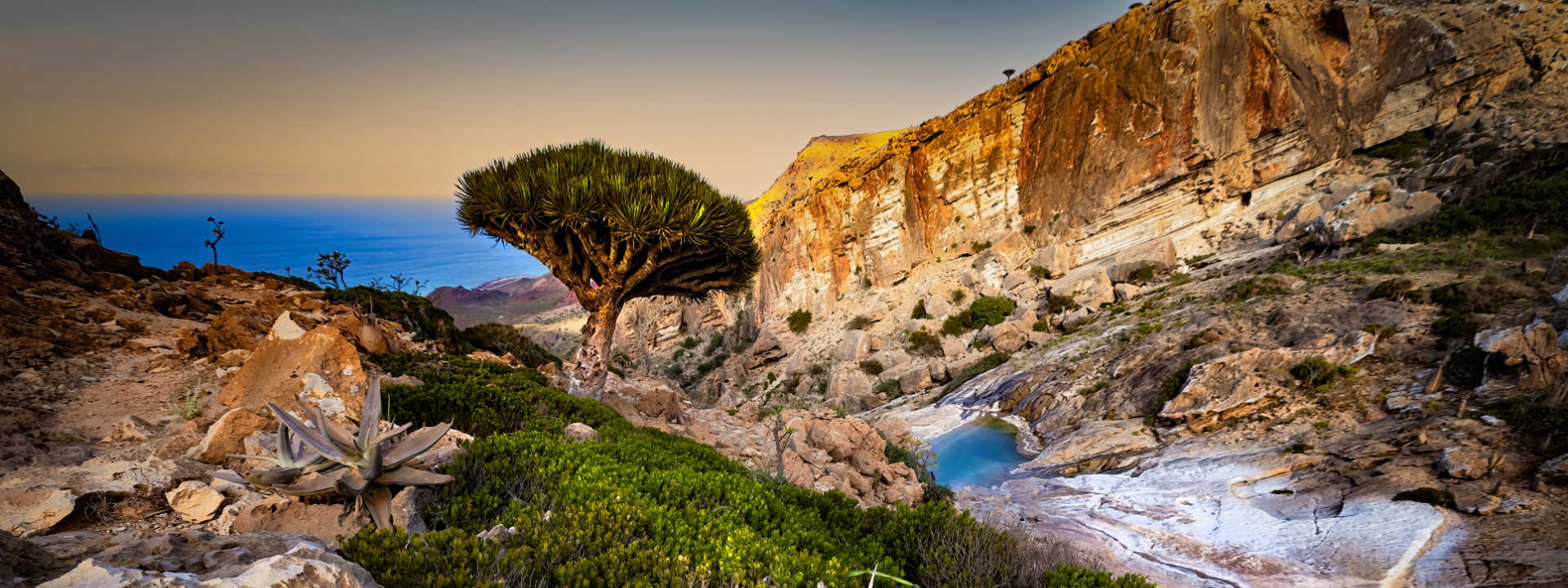
What made iconic veteran travel publisher Hilary Bradt fall for the remote, sparsely inhabited archipelago of Socotra so deeply in 2020 that she crowdfunded a new guidebook to it? What made Lonely Planet founder Tony Wheeler and his travel editor friend Simon Calder rave about Socotra in 2019?
Visit Socotra and you’ll discover one of the most isolated continental (ie non-volcanic) landforms on the planet. It’s this isolation and the fact that it’s been an island for at least 200 million years that have led to it being dubbed ‘the Galapagos of the Indian Ocean’.
Like the more famous Ecuadorian archipelago, Socotra has a huge number of endemic species (nearly 700), that many of you won’t even have heard of. One of the most biodiverse places on the globe, it is, unsurprisingly, UNESCO World Heritage-listed. Come here and you might feel like you’ve landed on another planet.
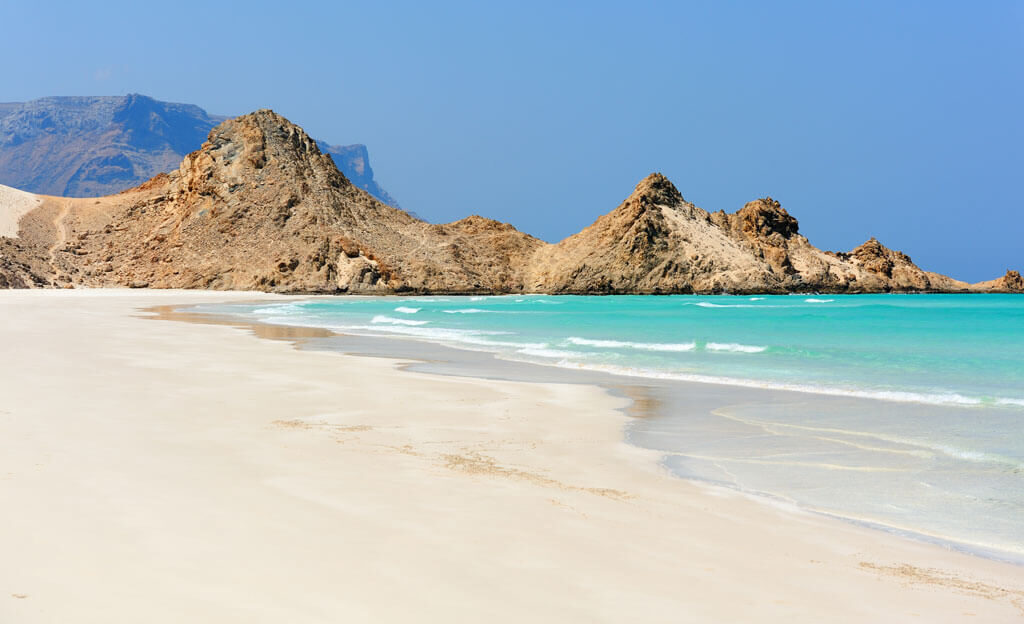
Why visit Socotra with Native Eye?
We’re experts in taking people to Socotra, having started running trips as far back as 2014. We paused when war on the mainland meant there were no flights to the island, starting again before the pandemic and then again in late 2021. Our sales consultant Michaela has recently been on our tour there and shares her enthusiasm in her photo story below.
Socotra is not the kind of place for wandering around by yourself – not for safety reasons, but out of cultural sensitivity, because locals are not yet very used to visitors. So a guide and driver will reassure everyone.
How do you get to Socotra?
It’s also tricky to get all the way there yourself, so we include flights from Abu Dhabi to Socotra. In short, our Socotra Discoverer itinerary does everything for you.
What’s Socotra like and what is there to see and do there?
A few hundred kilometres from Yemen (to which it belongs – despite being geographically part of Africa), Socotra rewards those who venture here with unique and breathtaking plant and animal life like nothing else on Earth.
You’ll also encounter otherworldly landscapes of plunging canyons, dramatic gorges and cascading waterfalls in the Hajhir massif, and on the coast towering snow-white sand dunes formed by the monsoon winds – which you can climb for glorious views out across the shimmering expanses of the Arabian Sea.
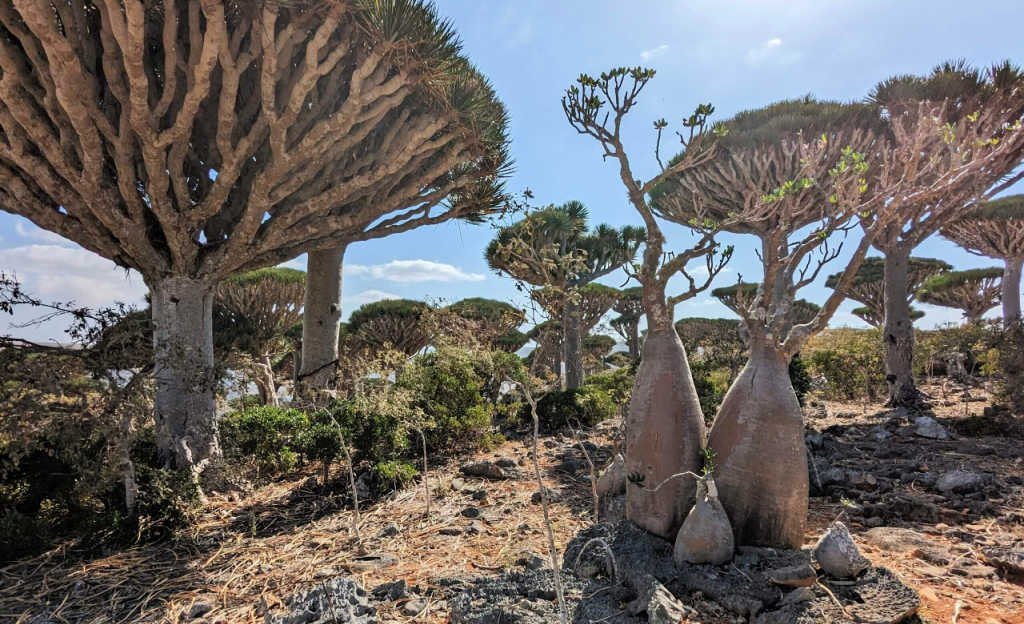
Most famous (and photogenic) are Socotra’s dragon’s blood trees (Dracaena cinnabari), named for their red sap used in local dyes and remedies. The canopies formed by their branches and their remarkable spiky leaves are the result of adaptation to the hot, dry climate. Other endemic plants that have done similar are the bulbous Socotra desert rose or bottle tree (Adenium socotranum), the giant succulent tree (Dorstenia gigas) and the cucumber tree (Dendrosicyos socotranus), and you’ll also find frankincense and myrrh growing here.
Bats are the only native mammals residing on Socotra, but the bird, reptile and marine life is spectacular. It includes Socotra sunbirds, cormorants and bunting, skinks, legless lizards, three species of freshwater crab, and more than 250 types of coral. If you swim and snorkel in Dihamri Bay – as you can on our Socotra Discoverer group tour – you might glimpse parrotfish, moray eel, rays and turtles.
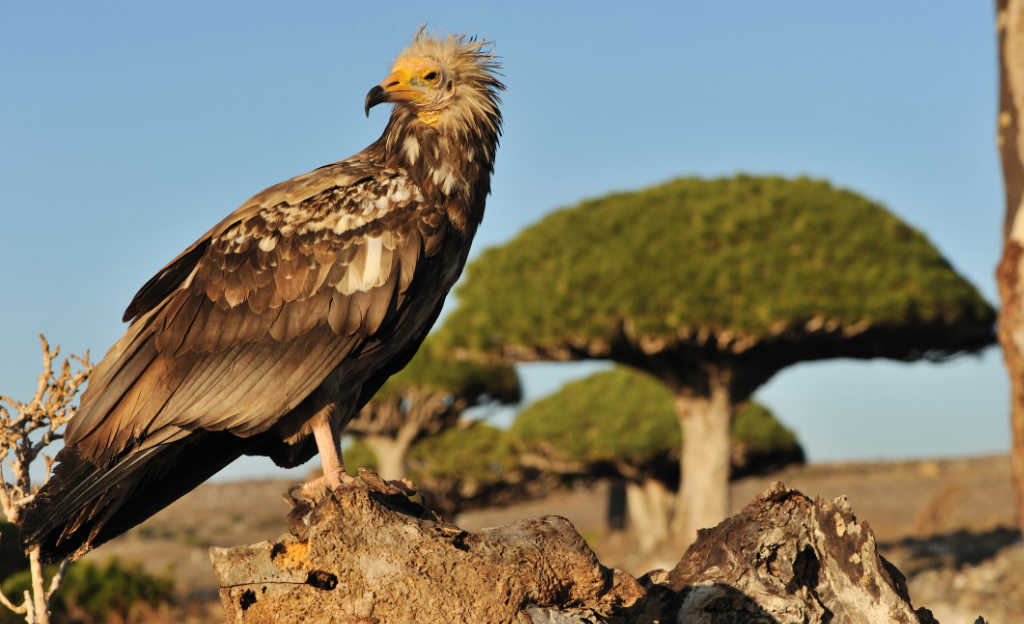
In terms of other humans, you’ll see few fellow travellers, while the island settlements are tiny. Even the capital Hadiboh, on the main island of Socotra (there are three other islands plus two rocky islets), has only around 8,500 inhabitants. Locals are welcoming if sometimes a bit shy.
These days, the Soqotri are mainly Sunni Muslims; previous settlers, from the 4th century on, were Nestorian Christians, while Oldowan stone tool finds point to prehistoric habitation. There’s also evidence in Hog Cave (part of our itinerary) of sailors visiting the island between the 1st century BCE and the 6th century CE. And there are some Africans here, too – descendants of slaves.
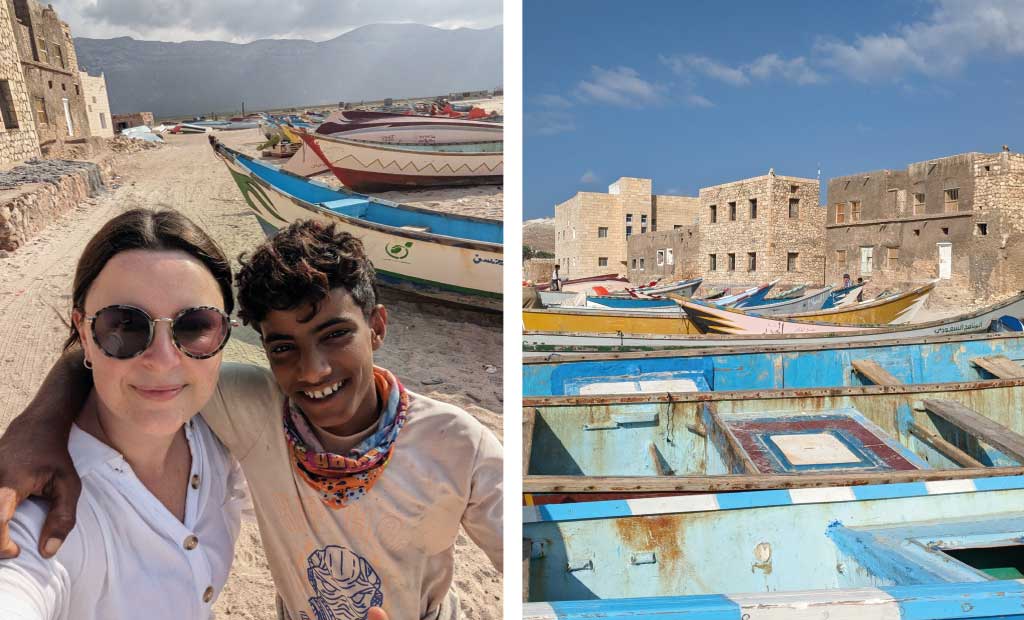
Hiking, dolphin and other wildlife spotting, and water-based activities – including windsurfing, swimming in freshwater canyon pools, lagoons and the sea, and snorkelling – are the main things to do when you visit Socotra Island, which means you’re best off coming in October, November or February, which are not too hot or rainy.
Tips for visiting Socotra
1. Given the need for a visa and the complexity of flights (you currently fly from Abu Dhabi, but tickets are hard to book independently), an organised tour is by far the best way of experiencing all that Socotra has to offer.
2. Socotra is also not a place for luxury or resort hotels; accommodation in low-key hotels or guesthouses is comfortable and authentic but resolutely no-frills. Camping trips can also be arranged as an alternative way to experience all that the island has to offer.
3. Socotra has some rough and loose terrain, so bringing sturdy, worn-in walking or hiking boots is a must. Some walking routes are quite steep and challenging, but you can opt out of them if this is an issue.
4. Any other questions you might have are probably covered in our Essential Information tab in our Socotra Discoverer itinerary – or pick up the phone and we’d be very happy to chat with you about what a trip to this compelling and off-the-beaten-track destination is really like.
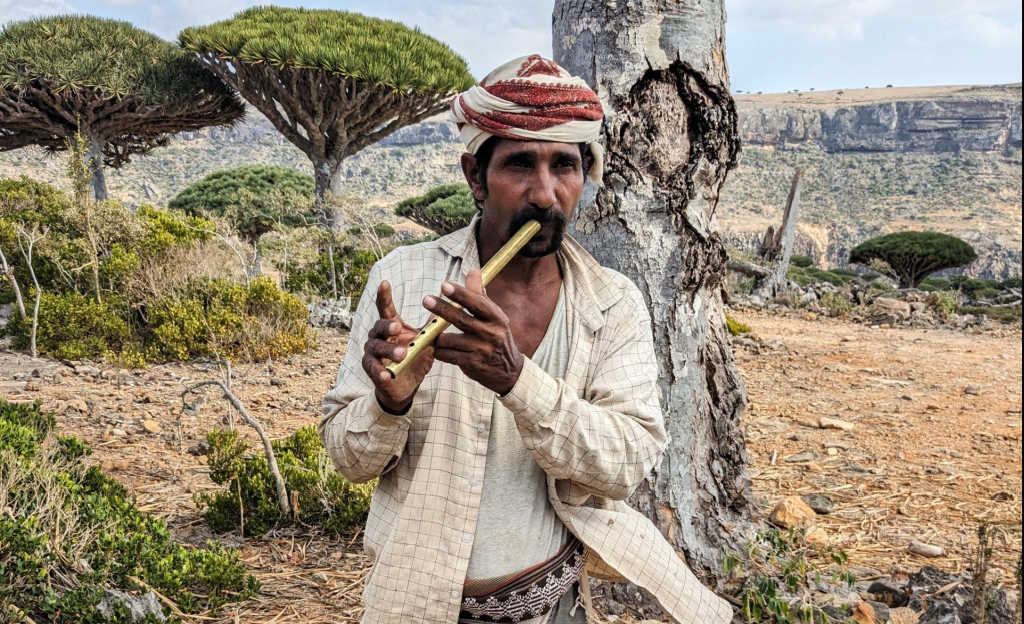
What some of our travellers have said:
“The raw, rugged natural beauty is out of this world and I felt I was in paradise! The dragon’s blood trees, huge bottle trees, frankincense trees… wow!” Aruna Mene
“I loved Socotra! It was even better than I had expected and I am urging several of my more intrepid friends to consider going there.” Carol Anderson
“Our driver was wonderful, the food good, and the scenery and dragon trees were truly amazing.” Caroline D’Sa
“The scenery was spectacular, which made the rough parts of the trip worthwhile. If you like a bit of adventure and expect the unexpected you will enjoy this trip.” John Stewart
Inspired to visit Socotra?
Our group tour operates twice a year in February and October, but if you prefer your travel a little more on the wild side we can organise a bespoke Socotra holiday. Camping trips can also be arranged, an alternative way to experience the island. At Native Eye, we pride ourselves on seeking out the world’s more unusual destinations, and they don’t come quirkier than this!
Get in touch by phone – 01473 328546 – or send an enquiry via our Contact page. We’d love to hear from you. You might also like to browse through the photos below, taken on our recent small group tour to the islands.
Socotra Discovery trip in photos
Native Eye’s Michaela Tart joined our most recent Socotra Discoverer tour and here she has put together a photo story of her trip.
1. Arher Dunes
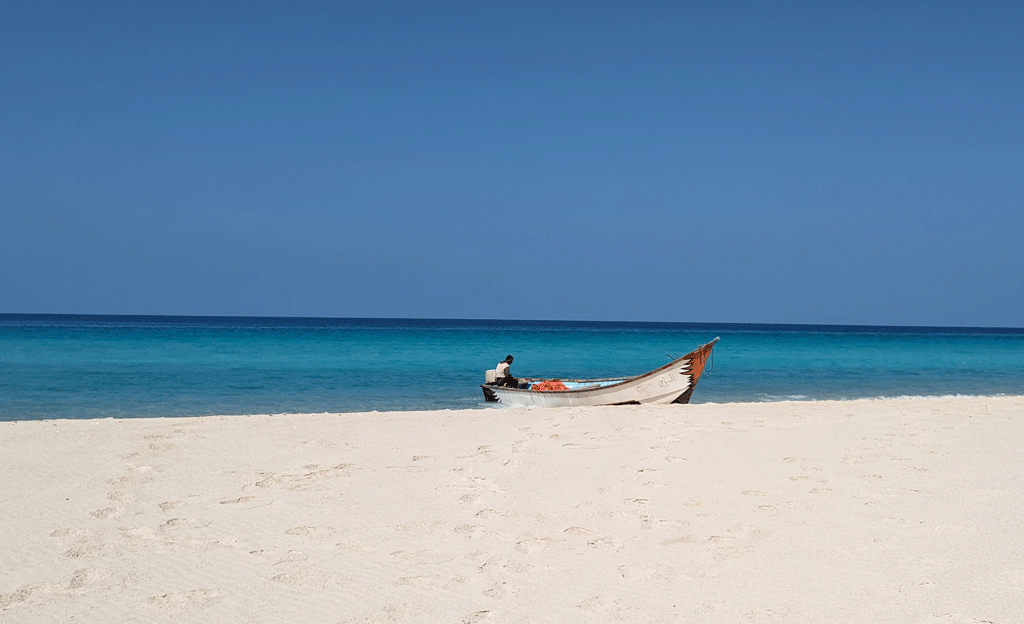
The white-sand beach at Arher on the island’s eastern tip is home to some of Socotra’s most impressive sand dunes, piled up against the 400m-high granite cliff behind. For those brave enough to scramble to the top, this is one of the best places in Socotra to watch the sun rise or set. Several freshwater streams run from the surrounding rock, attracting wading birds to the beach, and Egyptian vultures are a common sight all over the island but especially at this popular lunch-break location. At night it’s possible to see marine bioluminescence at Arher where sea creatures and fungi emit a blue light
2. Coral at Ras Errisel
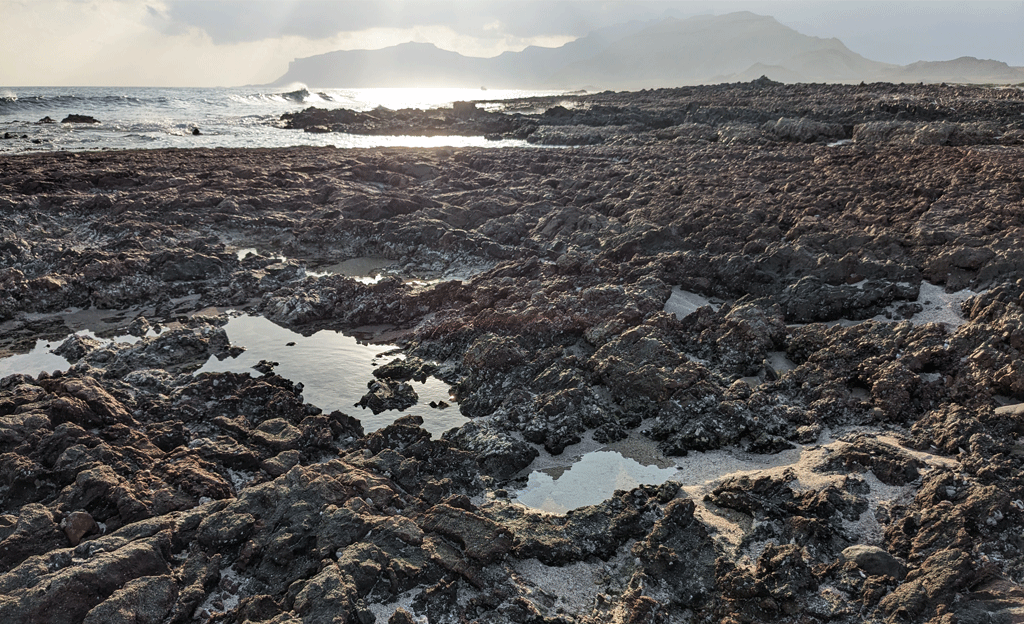
Further along the coast from Arher, at the extreme eastern tip of Socotra, Ras Erissel is a long spit of land exposed to winter storms and wild waters, where the Arabian Sea in the north and Indian Ocean in the south meet. You’ll find plenty of coral here, the remains of marine life such as enormous whale bones, and tiny hermit crabs hidden between the rocks
3. Qalansiyah
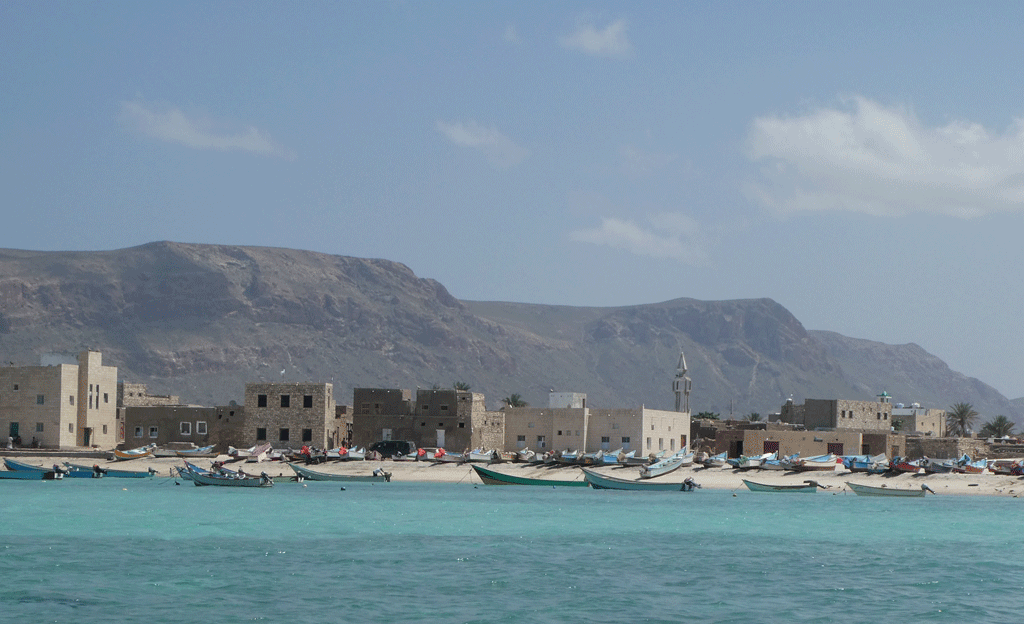
The town of Qalansiyah on the west coast is Socotra’s second largest. In contrast to the capital, Hadibo, it has a more relaxed feel and some lovely stone houses with colourful painted doors that the locals take great pride in.
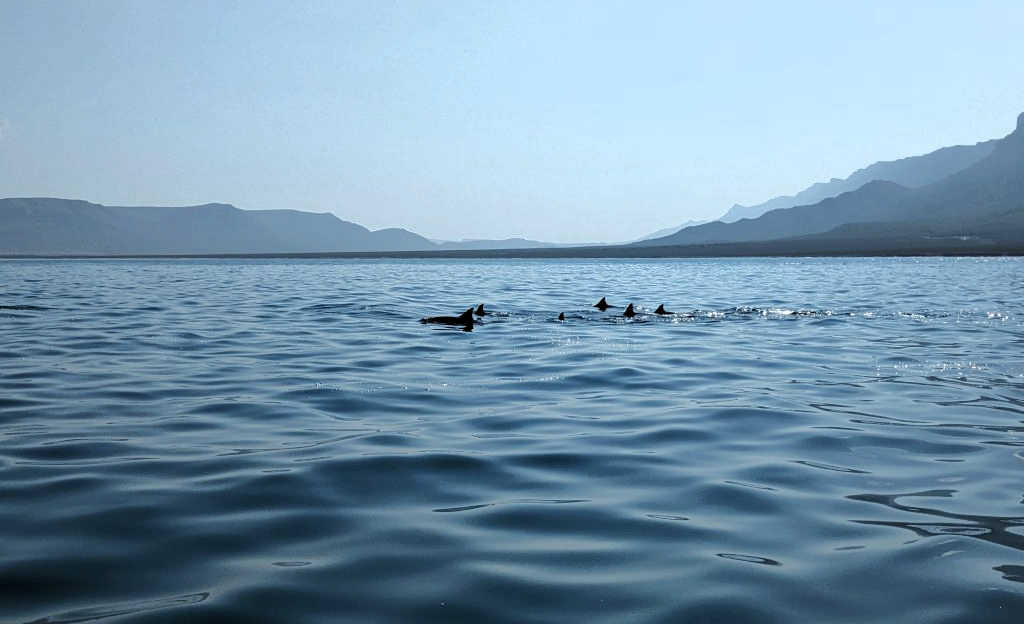
Primarily a fishing community, the beach here is full of traditional wooden boats – one of which took us to the secluded pristine beach at Shu’ab. The boat trip provides a nice opportunity to search for sea birds such as brown boobies and Socotra cormorants, and spinner dolphins are often seen in the waters. We were lucky to spot dozens.
4. Detwah Lagoon

The gorgeous Detwah Lagoon, close to Qalansiyah, is one of Socotra’s protected areas and an important feeding area for water birds. It’s also the only place on the island where the vulnerable leopard stingray and blue-spotted ribbon tail ray are found. Pufferfish, sea cucumbers, squid and the cartoon-like ghost crab with their long eyestalks also exist here. The lagoon is surrounded by dunes and limestone cliffs, and this area has some of the best views on the island.
5. Homhil Nature Sanctuary

Homhil Nature Sanctuary is where we caught our first glimpses of Socotra’s iconic dragon’s blood, cucumber, bottle and frankincense trees, and had a refreshing dip in the deep natural pool overlooking the Arabian Sea. The rocky, green and otherworldly landscape here is quite a contrast to the island’s flat coastal plain.
6. Stunning landscapes en route to Firmihin Forest
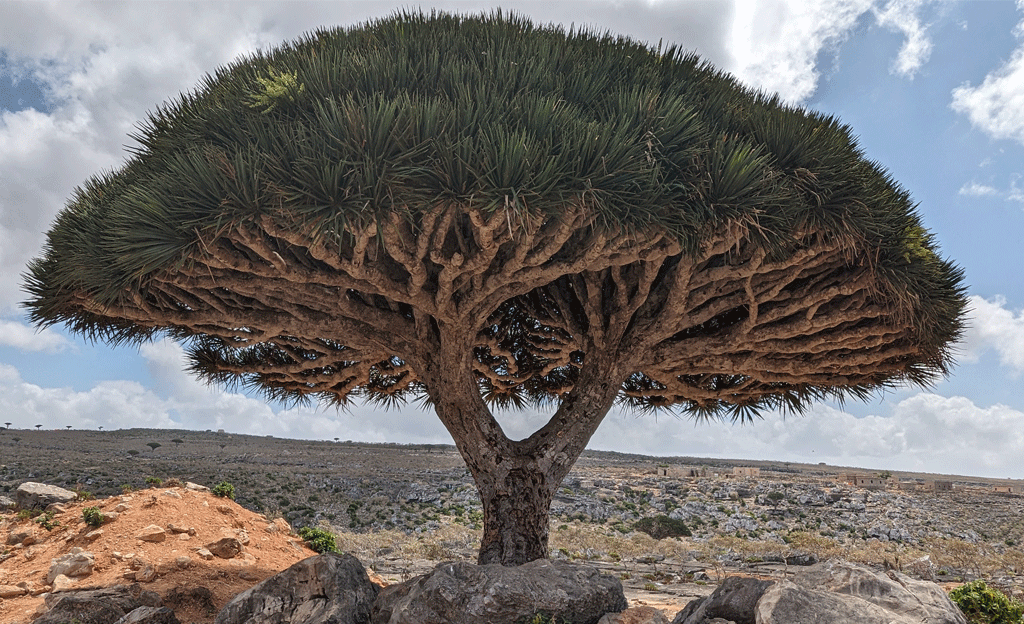
The heart of Socotra is where you will find its best mountain scenery and the highest concentration of dragon’s blood trees, in Firmihin forest – where an army of them stretches as far as the eye can see. The edge of the forest is also home to small Bedouin communities still living simple, traditional lives. We were fortunate to hear the local copper flute being played by one member of the older generation – a skill that is sadly being lost.
The route to Firmihin forest goes through some equally stunning landscapes, including the wadi and gorge pictured here. The chances of spotting some of Socotra’s endemic species are very good here; and if you keep your eyes peeled, you might see the Socotran chameleon and the blue baboon spider.

7. Hog Cave
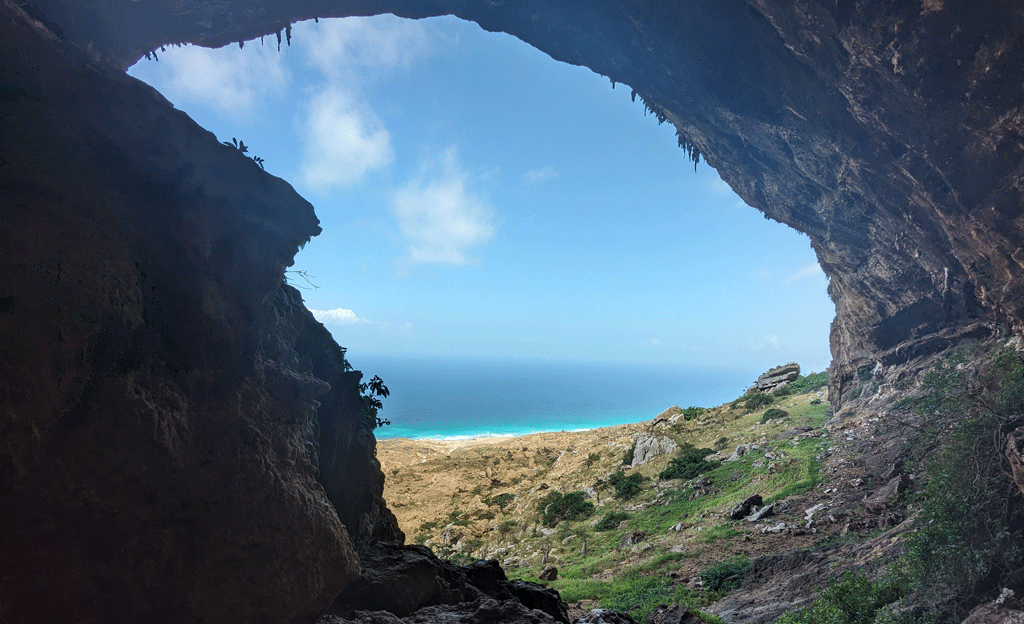
Hog Cave is one of Socotra’s most important archaeological sites. Inscriptions and pictograms found deep within the cave trace the presence of visitors to the island from the 1st century BC. Unfortunately, to preserve the scripts, this part of the cave is closed to visitors, but it’s well worth the uphill hike to explore the impressive stalagmites and stalactites inside. The view out across the sea from the cave’s entrance is gorgeous.
Other blog posts you may like:
Visit Syria – Go now!
Best Middle East Tours
Equatorial Guinea Travel Guide
A Guide to Travelling the Silk Road
Algeria Travel Guide
Jim O’Brien’s Photos of Oman
Best Places to Visit In Saudi Arabia
Travel guide to Sao Tomé & Principe


